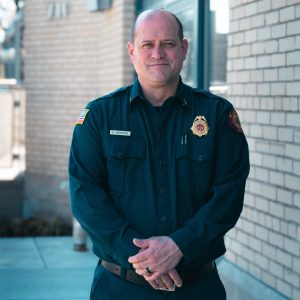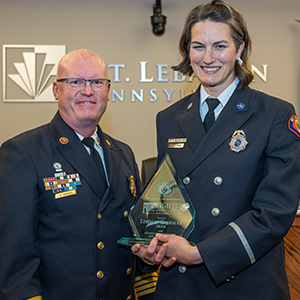composting 101
A group of Mt. Lebanon High School students is trying to save the world. They hold tactical meetings, they educate the masses, and they execute their missions with military precision— all for the preservation of Earth. The group—the Mt. Lebanon High School Environmental Club—had its most recent victory in the school cafeteria, where students can now use a fully functioning composting and recycling station.
“I know many colleges and universities compost, but I am not aware of any other school districts that have a successful compost program,” says Tazeen Chowdhury, Food Service Director for Mt. Lebanon School District. “It shows that we, as a district, are making efforts to reduce our global footprint, and we’re teaching students to be stewards of the Earth.”
The composting station at the high school, which was ready for use when the new cafeteria opened last spring, has a bin each for compost, recycling, liquids and landfill. The students begin by emptying food scraps into the compost bin, liquids in the liquid bucket, and then they determine whether the remaining waste should be recycled or sent to the landfill.
“It’s very easy to compost,” says Environmental Club member and senior Adam Preston-DeLeon. “You just need to recognize the signs to know what goes in each bin.” To teach the signs to the student body, the Environmental Club produced a video broadcast during the morning announcements.

Alex Terasavage, also a senior and a member of the Environmental Club, starred in the video as an environmentally conscious superhero (click here to view it now). “I think the comedy of it really appealed to the students in the cafeteria,” says Terasavage, who would like to see more students taking the initiative to use the composting station.
The Environmental Club is responsible for spreading the word about composting in the cafeteria, and it is no simple task. Garbage cans and recycling bins are stationed around the perimeter of the room, so it takes some convincing to get all of the students using the composting station, rather than simply choosing to use the bins nearest them.
Data collection was employed last spring showing how much waste is generated, and it helped illustrate the importance of the program to the students. Before the composting station, it was estimated that 200 pounds of food was going to the landfill per day. Eighty-eight pounds was diverted to a local farm in the first week the station was open, and it expanded to 100 pounds by week three. Yet convincing the students to use the composting station is only one piece of the overall operation.
Mt. Lebanon mom Corey Flynn originally organized the project as part of an internship for her dietetics class at Community College of Allegheny County. She worked with Chowdhury, the Environmental Club and its advisors, Laura Wilcox and Rob Bergstresser and the PTA.
The food waste is processed into compost at a horse farm in Upper St. Clair and returned to the high school.
“We use the soil for projects here at school,” says Environmental Club senior Tom Bryan, who described learning about “every composting process there is” in his 11th grade science class.
The Environmental Club next hopes to beautify outside the school in the spring, weather and construction permitting. Specifically, the club would like to start and manage a perennial garden on the school grounds.





